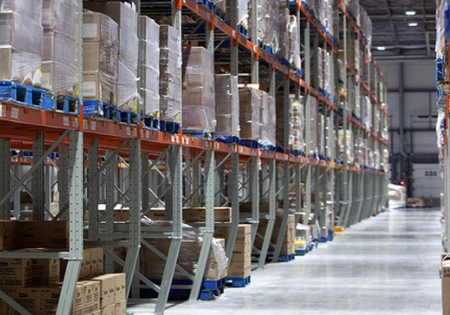
Today, thanks to digital marketplaces and online storefronts, businesses can sell their products to customers all around the world. Smaller e-commerce companies may be able to handle shipping themselves, but as their sales and distribution needs increase, these businesses often struggle to keep up.
To help you avoid this issue, we asked Young Entrepreneur Council members how to shift your business’ operations from small-volume shipping to larger-scale distribution. Here’s their best advice.
1. Always Think Ahead
Always make sure you are actively seeking to implement solutions that can handle scale without breaking. This means finding ways to automate every step, thinking 10 steps ahead of where you are and having a plan for a sudden influx of business. Make sure you have more inventory than you think you need on hand and the ability to handle the corresponding increase in customer support requests! – Justin Faerman, Conscious Lifestyle Magazine
2. Look At Competing Carriers For Incentives
As you grow, there will be shipping companies dying to get your business. These companies often offer incentives for switching, as they know changing carriers can be a headache. Shop around and see what’s on offer. Remember, as you grow, you gain more power. You can also look into consolidating accounts, as shipping in bulk from only one carrier is likely to cost less. – Ismael Wrixen, FE International
3. Get Your Fulfillment Infrastructure In Place
Ramping up product volume puts a strain on business functions from the supply chain to finances, but fulfillment can be a particular problem. Overburdened fulfillment processes create a bottleneck as a business scales up to a larger operation. If warehousing and shipping don’t scale, customers feel the impact. Focus resources on building out fulfillment before making promises to customers. – Vik Patel, Future Hosting
4. Rely On A Distribution Center At First
Until you’ve reached scale, you should use a distribution center to do the heavy lifting. They have the systems in place to handle the volume, and more often than not, it’s cheaper than scaling immediately up to that level on your own. Eventually, you can create your own distribution center to further grow your own business and keep it in house. – Jared Weitz, United Capital Source Inc.
5. Analyze Your Foundation
Analyze all aspects of your supply chain and shipping process to identify areas where improvement may be needed to support the growth. Be cautious; with relatively little volume, you may overlook small problems. When you scale, the small problems can very quickly become big problems. Focus on the details and don’t brush aside concerns that may be low-risk due to the previous low volume. – Matthew Podolsky, Florida Law Advisers, P.A.
6. Scale Up Your Trust
I led within a startup that grew by 19 times in one year. Adding to the challenge, our company sold a highly fragile and perishable product. This taught me one thing: Scale requires trust. Specifically, the movement of physical goods demands more human involvement and room for error. To scale your trust in your team, start with improving consistent communication and reporting. – Caroline Beckman, Nouri Life
7. Look Into Adaptable Warehouse And Forklift Designs
Start with an adaptable warehouse and forklift design. Usually, companies that sell pallet racks can help with the design (often for free if you are buying racks from them). Additionally, if you are buying a forklift, you may want to buy one that doesn’t require much aisle width. Many newer forklift models take up smaller aisle space, which creates more room to store and transfer goods. – Shu Saito, Godai Soaps
8. Develop Fulfillment Efficiencies Beyond Packaging
While focusing on package size, weight and shipping rate negotiations with shipping companies is important, it’s only half of the difficulties of scaling. Developing an efficient fulfillment process and organized storage facility is key. Every second you can save pulling products from shelves and getting them ready for shipment will save you money and make your customers more satisfied. – Shaun Conrad, My Accounting Course
9. Hire Backup And Redundant Suppliers
When you do business at a large scale, supply-chain problems can quickly become catastrophic. You have significantly less breathing room when something goes wrong, so it’s important that you spend more time networking with companies that can help you as a backup supplier, even if you don’t need them quite yet. – Matt Doyle, Excel Builders
10. Hire Staff To Take Over Shipping So You Can Focus On Growth
We were a one-man show, packing and shipping everything ourselves even after we reached 1 million. To expand to the 2 million mark, we hired employees to pack and ship, allowing us to focus on growth. Since they were focused on packing and shipping, fewer mistakes were made. Look for people you can train to be as good as you. – Daniel Robbins, OC Facial Care Center
11. Improve Your Forecasting
With so many advancements in analytics, supply chain forecasting has not caught up with the latest trends in machine learning, even at large organizations. While scaling for larger demand, an organization should leverage machine learning that brings macro factors in the industry, category trends and consumer behavior into the forecasting model. This can truly be a differentiator for your organization. – Shilpi Sharma, Kvantum Inc.
Source: Forbes
